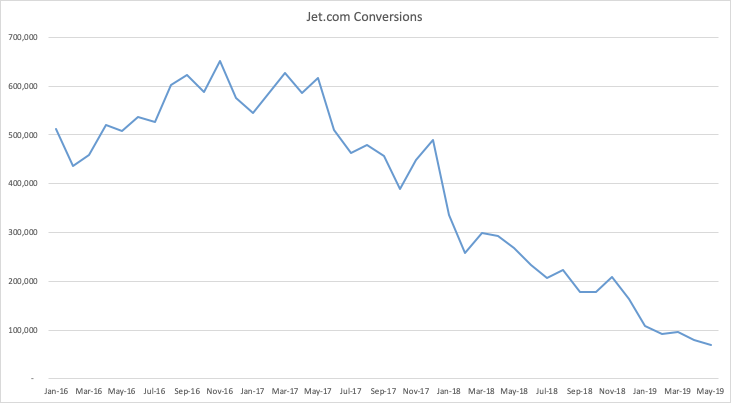
Walmart made headlines[1] last week by announcing that it would fold Jet.com into its Walmart ecommerce operations, less than three years after the $3.3 billion acquisition.
But, in fact, a closer look at the performance of both sites’ leads reveals:
- This shouldn’t be a surprise, because this has been Walmart’s plan all along, and
- Despite what the headlines say, this is primarily a win for Walmart despite the large acquisition price.
We’ll tell this story with two simple charts. Apologies in advance for over-doing the aviation metaphors. I couldn’t help myself. As the kids say, “Sorry. Not sorry.”
1. Jet’s transactions are way down
The number of transactions on Jet.com rose to more than 600,000 a month in early 2017 but has been on a precipitous decline since then, shrinking to less than 100,000 a month. They don’t even exhibit the holiday-shopping spikes nearly every other retailer exhibits.
A drop like this doesn’t happen by accident, not in a world where Walmart reports that its ecommerce sales were up 37 percent in Q1. Or, after the ecommerce marketplace as a whole has grown steadily since, well, the start of ecommerce. Or, where spending power among affluent urbanites (Jet.com’s supposed strength) continues to rise as economic bifurcation enters its fourth decade. There is a long list of contextual reasons why a rising tide (tailwinds?) should be lifting Jet.com. Because of this, its loss of altitude is even more surprising and stark.

Source: Jumpshot
2. Jet.com’s ecommerce fuel, paid search, is also way down
Jet.com is one a handful of ecommerce sites, along with Chewy.com and Wayfair.com, to have successfully bought their growth. Largely this means paying for

